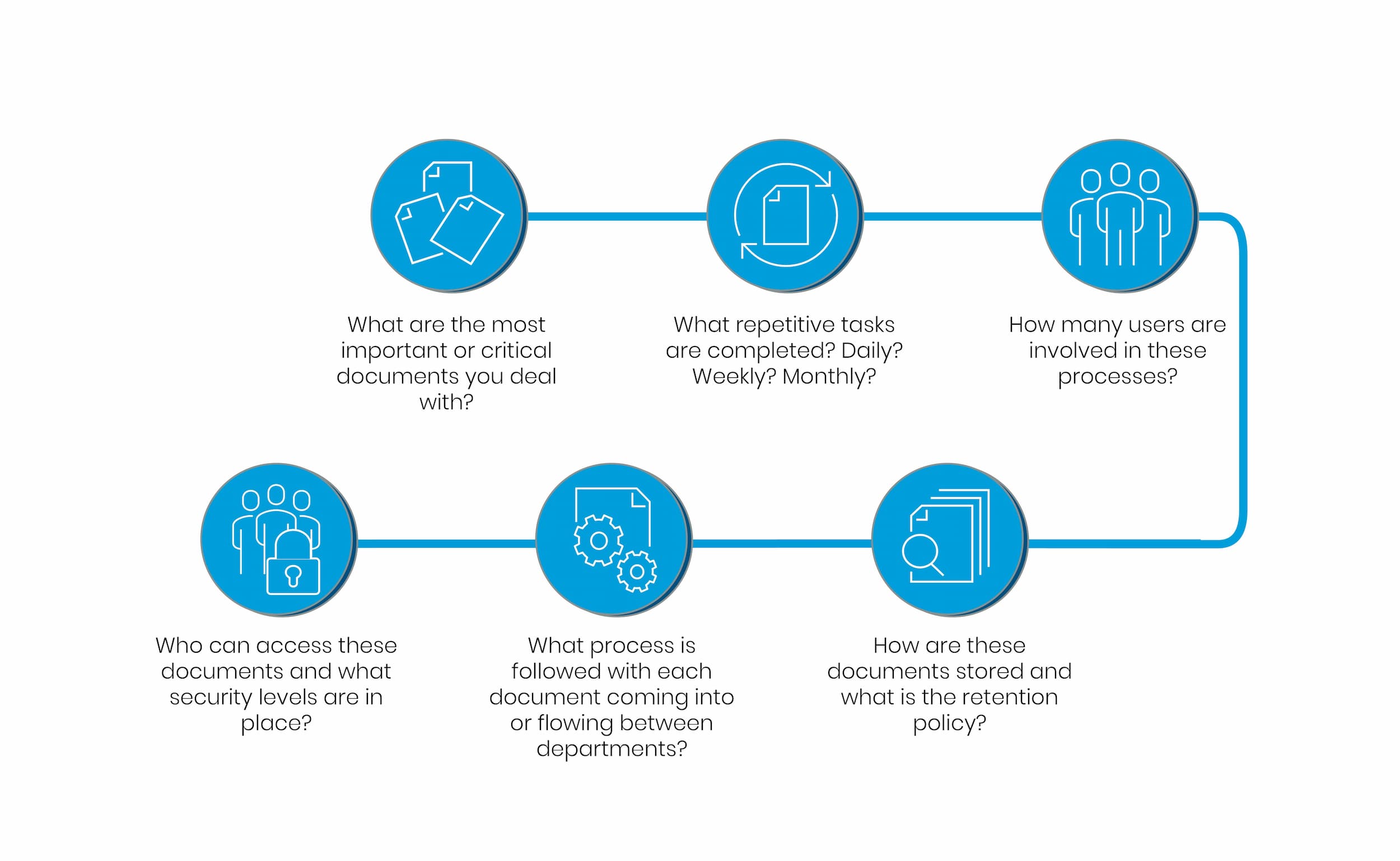The high volume of documents passing through financial institutions come in many forms, and fall under a variety of categories depending on the source, nature, and the set criteria of processes. Efficiency and productivity can be enhanced throughout the organisation by having greater control of these documents during their lifecycle.
How do you really know if your current processes are efficient, cost effective and optimising productivity?

Step One – take a closer look at your current document processes and their lifecycle. This requires the organisation to recognise what critical documents are being handled.
Step Two – determine which of these document processes are repetitive and labour intensive, and establish how frequently they’re repeated.
Step Three – understand how many users are involved in each stage of the document process and determine who they are. Having effective traceability and knowledge of document movements will help develop processes and worfklows to better suit your organisation.
Step Four – look into where documents are stored during each stage of their lifecycle. Identify any potential risks and ensure all documents and processes meet the company security policies. Look out for areas where documents are often duplicated - which is not only a storage concern, but can also be a security risk.
Step Five – understand the processes of each document flowing between departments. This will give visibility into whether there are unnecessary steps being taken in the process that can be replaced with automated workflows.
Step Six – Decide on a retention policy for when documents reach the end of their lifecycle. With the high volumes of documents flowing through organisations it’s critical each and every document has an end point. Whether they are stored in a Cloud, on a local server, or permanently deleted, these documents will often contain confidential information so compliance is of paramount importance.
Maximise your opportunities
This in-depth understanding will help identify any weaknesses and highlight the opportunities to optimise existing processes and workflows. By optimising these processes, managing high volumes of documents will no longer be an issue.
Organisations who review the document lifecycle can streamline their document processes and workflows. Please speak to an expert at Apogee today to learn how you can achieve this by completing the form below.












































